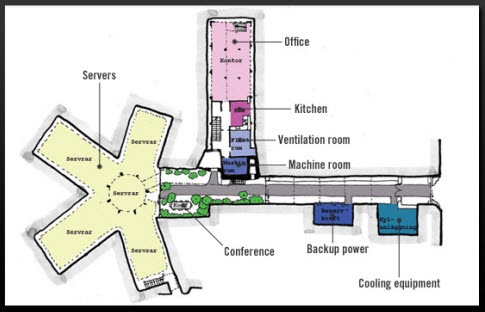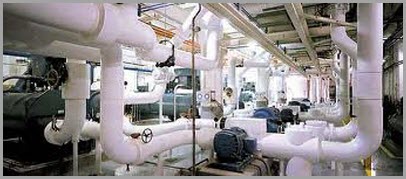PUE in an Imperfect World
Last week I started discussing the instrumentation and measurement of PUE when the data center shares resources with other facilities. The most common shared resource is chilled water, such as from a common campus or building mechanical yard. We looked at the simple way to allocate a portion of the power consumed by the mechanical equipment to the overall power consumed by the data center.
The approach there assumed perfect sub-metering of both the power and chilled water, for both the data center and the mechanical yard. Lovely situation if you have it or can afford to quickly achieve it, but not terribly common out in the hard, cold (but not always cold enough for servers) world. Thus, we must turn to estimates and approximations.
Of course, any approximations made will degrade the ability to compare PUEs across facilities--already a tricky task. The primary goal is to provide a metric to measure improvement. Here are a few scenarios that fall short of the ideal, but will give you something to work with:
 Can’t measure data-center heat load, but have good electrical sub-metering. Use electrical power as a substitute for cooling load. Every watt going in ends up as heat, and there usually aren’t too many people in the space routinely. Works best if you’re also measuring the power to all other non-data-center cooled space. The ratio of the two will get you close to the ratio of their cooling loads. If there are people in a space routinely, add 1 kWh of load per head per 8-hr day of light office work.
Can’t measure data-center heat load, but have good electrical sub-metering. Use electrical power as a substitute for cooling load. Every watt going in ends up as heat, and there usually aren’t too many people in the space routinely. Works best if you’re also measuring the power to all other non-data-center cooled space. The ratio of the two will get you close to the ratio of their cooling loads. If there are people in a space routinely, add 1 kWh of load per head per 8-hr day of light office work.- Water temperature is easy, but can’t install a flow meter. Many CRAHs control their cooling power through a variable valve. Reported “Cooling Load” is actually the percentage opening of the valve. Get the valve characteristics curve from the manufacturer. Your monitoring system can then convert the cooling load to an estimated flow. Add up the flows from all CRAHs to get the total.
- Have the head loads, but don’t know the mechanical yard’s electrical power. Use a clamp-on hand meter to take some spot measurements. From this you can calculate a Coefficient of Performance (COP) for the mechanical yard, i.e., the power consumed per cooling power delivered. Try to measure it at a couple of different load levels, as the real COP will depend on the % load.
- I’ve got no information about the mechanical yard. Not true. The control system knows the overall load on the mechanical yard. It knows which pumps are on, how many compressor stages are operating, and whether the cooling-tower fan is running. If you have variable-speed drives, it knows what speed they’re running. You should be able to get from the manufacturer at least a nominal COP curve for the tower and chiller and nominal power curves for pumps and fans. Somebody had all these numbers when they designed the system, after all.
Whatever number you come up with, perform a sanity check against the DOE’s DCPro online tool. Are you in the ballpark? Heads up, DCPro will ask you many questions about your facility that you may or may not be prepared to answer. For that reason alone, it’s an excellent exercise.
It’s interesting to note that even the Perfect World of absolute instrumentation can expose some unexpected inter-dependencies. Since the efficiency of the mechanical yard depends on its overall load level, the value of the data-center PUE can be affected by the load level in the rest of the facility. During off hours, when the overall load drops in the office space, the data center will have a larger share of the chilled-water resource. The chiller and/or cooling-tower efficiency will decline at the same time. The resulting increase in instantaneous data center PUE does not reflect a sudden problem in the data center’s operations; though it might suggest overall efficiency improvements in the control strategy.
PUE is a very simple metric, just a ratio of two power measurements, but depending on your specific facility configuration and level of instrumentation, it can be remarkably tricky to “get it right.” Thus, the ever-expanding array of tier levels and partial alternative measurements. Relatively small incremental investments can steadily improve the quality of your estimates. When reporting to management, don’t hide the fact that you are providing an estimated value. You’ll only buy yourself more grief later when the reported PUE changes significantly due to an improvement in the calculation itself, instead of any real operational changes.
The trade-off in coming to a reasonable overall PUE is between investing in instrumentation and investing in a bit of research about your equipment and the associated estimation calculations. In either case, studying the resulting number as it varies over the hours, days, and seasons can provide excellent insight into the operational behavior of your data center.


